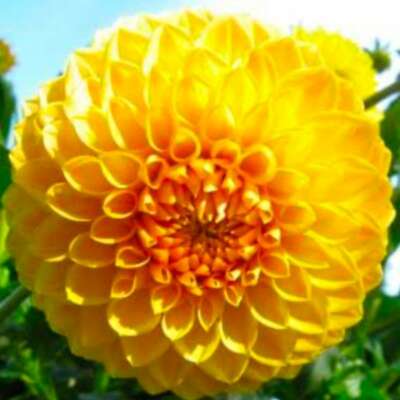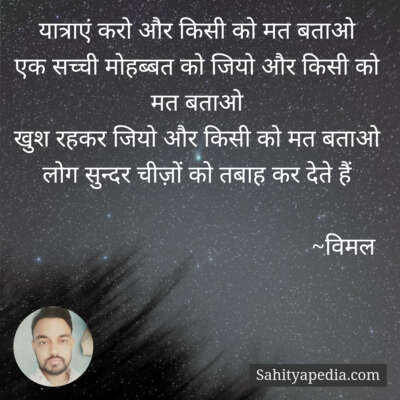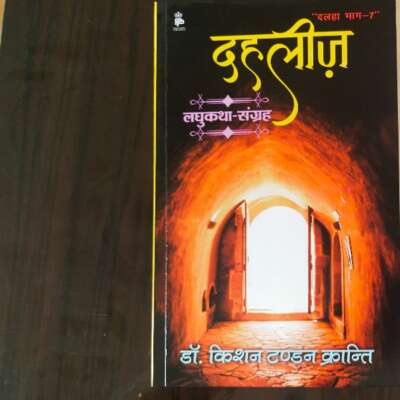Status of Women in India and National Policy for Empowerment of Women
Status of Women in India and National Policy for Empowerment of Women
Dr. Madhu Parashar*
Abstract
This research paper is an attempt to focus the status of women in various periods such as an ancient, medieval, British and modern. Today the traditional practices such sati, Jauhar and Devadasis, Purdan have been banned but the practice is still practiced in some communities in other forms while Indian constitution provides many facilities for the up gradation of the status of the women.
Education is an essential element of the empowerment of the girls and women. A good quality education, designed on the basis of women and girls immediate strategic needs, builds women’s capacities and prepares them to seize opportunities in the public and private domains. The empowerment societal attitude and behavior that discriminate against girls and women. The empowerment of women is therefore linked to the empowerment of girls and to the full enjoyment of their rights.
The status of women in India has been subject to many great changes over the past few millennia. From equal status with men in ancient time, though the low points of the medieval period, to the promotion of equal rights by many referrers, the history of women in India has been eventful. In modern time, women have adorned President, Prime-minister, Speaker of Lok Sabha, Leader of opposition etc. The incumbent president of India is a Woman.
Women in Ancient India:
In ancient India, the women enjoyed equal status with men in all fields of life Indian Grammarian such as Patanjali and Katyayana suggest that women were educated in the early Vedic period. Rig Vedic verses suggest that the women married at a nature and were face to select their husband scriptures such as Rigveda and Upanishads mention several women sages and seers, notably Gargi and Maitreyi. However, later 500 B.C., the status of women began to decline with the Smriti especially Manusmriti and the Islamic Invention of Babur and the Mughal Empire and later Christianity curtailing women’s freedom’s and rights. Although reformatory movements such as Jainism allowed women to be admitted to the religious order.
Women in Medieval Period:
The Indian women’s position in the society further deteriorated during the medieval period when Sati among some communities, child marriages and a ban on widow remarriages became part of social life in India. The Muslim conquest in the Indian subcontinent brought the purda practices in the Indian Society among the Rajputs of Rajasthan, the Jauhar was practiced. In some part of India, the Devadasis or the temple women were sexually exploited. Polygamy was widely practiced especially among Hindu Kshatriya rules. In Muslim families, women were restricted to Zenana areas.
In spite of these conditions, some women excelled in the filed of politics, literature, education and religion. Razia Sultana became the only women monarch to have ever ruled Delhi. The Gonda queen Durgawati ruled for fifteen years, before she lost her life in a battle with mughal emperor Akar’s General Asaf Khan in 1564. Chand Bibi defended Ahmednagar against the mighty mughal forces of Akbar in 1590. Jehangir’s wife Nurjahan effectively wielded imperial power and was recognized as the real force behind the mughal throne. The mughal Princesses Jahan ara and Zebunnissa were well known poets and also influenced the ruling administration Shivaji’s mother, Jijabai was deputed as queen regent, because of her ability as a warrior and administrator. In South India, many women administered villages, town, division and heralded social and religious institutions.
The Bhakti tried to restore women’s status. Mirabai, a female saint-poet was one of the most important Bhakti movement figure. Some of other female saint-poets from this period include Akka Mahadevi, Rani Janabai and Lal Ded. Shortly after Bhakti movement, Guru Nanak, the first Guru of Sikhs also preached the message of quality between men and women. He advocated that women be allowed to lead religious assemblies, to lead armies on the battle field and equality in Smrit (Baptism).
Women in British Rule:
During the British ray, many reformers such as Raja Ram Mohan, Ishwar Chandra Vidyasagar, Jyotirao phule etc. fought for upliftment of women. Raja Ram Mohan Roy’s efforts lead to the abolition of the Sati practice under Governor General William Cavendish Bentinck in 1829. Ishwar Chandra Vidyasagar’s crusade for the improvement in condition of widows led to the widow remarriage Act of 1856.
Kittur Chennmma, the queen, the queen of the princely state kittur in Karnataka, led an armed rebellion against the British. Rani Laxmi Bai, the queen of Jhansi, led the Indian Rebellion of 1857 against the British. Chandramukhi Basu, Kadambini Ganguly and Anandi Gopal Joshi were few of earliest Indian women to obtain educational degrees. The All India Women’s Educational Conference was held in Pune in 1927. In 1929, the child marriage restraint Act was passed, stipulating fourteen as the minimum age of marriage for a girl through the efforts of Mohamed Ali Jinnah.
Women played an important part in India’s independence struggle such as Bhikaji Kama, Dr. Annie Besant, Vijayalaxmi Pandit, Sucheta Kripalani and Kasturva Gandhi, Mudhulaxmi Reddy, Durgabai Deshmukh etc. The Rani of Jhansi Regiment of Subhash Chandra Bose’s Indian National Army consisted of entirely of women including Captain Laxmi Sehgal.
Women in Independent India:
Women in India now participate in all activities such as education, sports, politics, media, art and culture, service sectors, science and technology, etc. Indira Gandhi, who served as Prime Minister of India for an aggregate period of fifteen years is the world’s longest serving woman Prime Minister.
The Constitution of India guarantees to all Indian women equality (Article 14), no discrimination by the State (Article 15(1)), equality of opportunity (Article 16), equal pay for equal work (Article 39(d)). In addition, it allows special provisions to be made by the State in favour of women and children (Article 15(3)), renounces practices derogatory to the dignity of women (Article 51(A) (e)), and also allows for provisions to be made by the State for securing just and humane conditions of work and for maternity relief.
In 1990s, grants from foreign donor agencies enabled the formation of new women-oriented NGOs. Self-help groups and NGOs such as Self Employed Women’s Association (SEWA) have played a major role in women’s rights in India. Many women have emerged as leaders of local movements. For example, Medha Patkar of the Narmada Bachao Andolan.
The Government of India declared 2001 as the Year of Women’s Empowerment (Swashakti). The National Policy For the Empowerment of Women came was passed in 2001.
In 2010 March 9, one day after International Women’s day, Rajyasabha passed Women’s Reservation Bill, ensuring 33% reservation to women in Parliament and state legislative bodies.
Women in Educational Field:
Though it is gradually rising, the female literacy rate in India is lower than the male literacy rate. Compared to boys, far fewer girls are enrolled in the schools, many of them dropout. According to national sample survey data of 1997, only the states of Kerala and Mizoram have approved universal female literacy rates.
Under Non- Formal Educational Pragamme (NFE), about 40% of the centers in states and 10% of the centers in UTs (Union Territories) are exclusively reserved for females. As of 2000, about 0.3 million NFE centers were catering to about 7.42 million children, out of which about 0.12 million were exclusively for girls.
According to a 1998 report by U.S. Department of Commerce, the chief barrier to female education in India are having inadequate school facilities such as sanitary facilities, shortage of female teachers.
Workforce participation:
In urban India Women have impressive number in the workforce. As an example at software industry 30% of the workforce is female. In rural India, agriculture and allied industrial sectors employ as much as 89.5% of the total female labour. In overall farm production, women’s average contribution is estimated at 55% to 66% of the total labour. According to a 1991 World Bank report, women accounted for 94% of total employment in dairy production in India.
One of the most famous female business success stories is the Shri Mahila Griha Udyog Lijjat Papad. In 2006, Kiran Mazumdar-Shaw, who started Biocon – one of India’s first biotech companies, was rated India’s richest woman. Lalita Gupte and Kalpana Morparia (both were the only businesswomen in India who made the list of the Forbes World’s Most Powerful Women), run India’s second-largest bank, ICICI Bank.
Land and Property right:
In 1986, the Supreme Court of India ruled that Shah Bano, an old divorced Muslim woman was eligible for maintenance money. The Union Government subsequently passed the Muslim Women’s (Protection of Rights Upon Divorce) Act.
Dowry:
In 1961, the Government of India passed the Dowry Prohibition Act, making the dowry demands in wedding arrangements illegal. In 1985, the Dowry Prohibition (maintenance of lists of presents to the bride and bridegroom) rules were framed. According to these rules, a signed list of presents given at the time of the marriage to the bride and the bridegroom should be maintained.
A 1997 report claimed that at least 5,000 women die each year because of dowry deaths, and at least a dozen die each day in ‘kitchen fires’ thought to be intentional.
Child Marriage:
Although child marriage was outlawed in 1860, it is still a common practice. According to UNICEF’s “State of the World’s Children-2009” report, 47% of India’s women aged 20–24 were married before the legal age of 18, with 56% in rural areas.
Female infanticides and selective abortions:
All medical tests that can be used to determine the sex of the child have been banned in India, due to incidents of these tests being used to get rid of unwanted female children before birth. Female infanticide (killing of girl infants) is still prevalent in some rural areas. The abuse of the dowry tradition has been one of the main reasons for sex-selective abortions and female infanticides in India.
Domestic violence:
The incidents of domestic violence are higher among the lower Socio-Economic Classes (SECs). The Protection of Women from Domestic Violence Act, 2005 came into force on October 26, 2006.
Notable Indian Women:
Singers and vocalists such as M.S. Subbulakshmi, Gangubai Hangal, Lata Mangeshkar and Asha Bhosle, and actresses such as Aishwarya Rai, are widely revered in India. Anjolie Ela Menon is one of the famous painters.
Sports:
Some of the famous female sportspersons in Indian include P. T. Usha, J. J. Shobha (athletics), Kunjarani Devi (weightlifting), Diana Edulji (cricket), Saina Nehwal (badminton) , Koneru Hampi (chess) and Sania Mirza (tennis). Karnam Malleswari (weightlifter), is the only Indian woman to have won an Olympic medal (Bronze medal in 2000).
Politics:
Through the Panchayat Raj institutions, over a million women have actively entered political life in India. As per the 73rd and 74th Constitutional Amendment Acts, all local elected bodies reserve one-third of their seats for women. Although the percentages of women in various levels of political activity has risen considerably, women are still under-represented in governance and decision making positions.
Literature:
Many well known women writers are in Indian literature as poets and story writers. Sarojini Naidu, Kamala surayya, Shobha De, Arundhati roy, Anita Desai are some of them. Sarojini Naidu is called the nightingale of India. Arundhati Roy was awarded the Booker Prize (Man Booker Prize) for her novel The God of Small things.
Measures should be take for women’s advancement:
After independence various committees are constituted to upgrade the women status, such as National Committee on women’s Education (1958), National Council of Women’s Education (1959), Hansa Mehta Committee (1962), Acharya Ramamurti Committee (1990) and Women Education and National Education Policy (1986) The National Commission for women (1990).
These Committees suggest that care should be taken to see but no step is taken which will tend to perpetuate or intensify the existing difference and there should be not need in such a society to differentiate curricula on the basis of sex.
The constitution not only grants equality to women but also empowers the state to adopt measures of positive discrimination in favour of women. Within the framework of a democratic polity, our laws developmental policies, plans and programs have aimed at women’s advancement in different spheres. From the fifth five year plan (1974-78) onwards has been a marked shift in the approach to women’s issues from welfare to development.
In recent years the empowerment of women has been recognized as the central issues in determining the status of women. In order to secure equal rights of women, the ratification of the Convention on Elimination of all forms of Discrimination on Against Women (CEDAW) in 1993 is followed.
The women’s movement and a wide- spread network of non-Government Organizations which have strong grass-roots presence and deep insight into women’s concerns have contributed in inspiring initiatives for the empowerment of women.
However, there still exists a wide gap between the goals enunciated in the Constitution Legislation, policies and plans. This has been analyzed extensively in the report of the committee on the status of women in India, “Towards equality, 1974 and highlighted in the Million of perspective plan for women, 1988-2000, the Shramshakti Report 1988 and the platform for action, five year assessment.”
The access of women particularly of those belonging to weaker sections including Scheduled Caste/ Scheduled Tribes / Other Backward Classes and minorities, majority of whom are in rural area to education, health and productive resources is inadequate. Therefore they remain largely marginalized, poor and socially excluded.
Legal-Judicial System should be made more responsive in cases of domestic violence and personal assault. Existing laws reviewed to ensure that Justice is quick and the punishment met out to the culprits is commensurated with the severity of the offence. The policy would aim to encourage changes in personal laws related to ownership of property and inheritance by evolving consensus in order to make them gender just-
It is evident that there is a need for reforming policies for access to employment and equality of employment strategies will be designed to enhance the capacity of women and empower them to meet the negative social and economic impacts, which may flow from the globalization process.
The important role played by women in electronics, information technology and food processing and textile has been crucial to the development of these sectors. They should be given support in terms of labour legislation, social security and other support services to participate in various industrial sectors.
The most important thing is that women at present can not work in night shift. Suitable measures should be taken to enable women so work on the night shift in facilities. This should be accompanied with support service for security, transportation etc.
Equal access to education for women and girls will be ensured special measures should be taken to eliminate discrimination, universalize education, eradicate illiteracy. Reducing the gender gap in secondary and higher education should be a focus area. Sectoral time targets in existing policies should be achieved with a special focus on girls and women, particularly those belonging to weaker section including the Scheduled Castes / Scheduled Tribes/ Other Backward Classes/ Minorities. Geneder sensitive curricula would be developed at all levels of education system in order to address sex stereotyping as one of the causes of gender discrimination.
Programs should be strengthened to bring about a greater involvement of women in science and technology. So special measure should be taken for their training in areas where they have special skills like Communication and Information Technology.
In recognition of the diversity of women’s situation, specially disadvantaged groups. Measures should be undertaken to provide them special assistance. A special emphasis will also be laid on trafficking in women and girls.
Thus for upgrading the women the existing legislative structure will be reviewed to implement the policy. In brief following other measures should be promoted to implement the legislation effectively-
Strict enforcement of all relevant legal provisions and speedy redressal of grievances will be ensured with a special focus on violence and gender related atrocities.
Measures to prevent and punish sexual harassment at the place of work, protection for women workers in the organized / unorganized sector and strict enforcement of relevant laws such as Equal Remuneration Act and minimum wages Act should be undertaken.
Women’s cells in police stations, mahila courts, legal aid centres and Nyaya Panchayats will be strengthened and expanded to eliminate violence.
Widespread dissemination of information on all aspects of legal rights, human rights and other entitlements of women, through specially designed legal literacy programmes and rights information programmes should be done.
Promoting societal awareness to gender issues and women’s human rights.
Review of curriculum and educational material to include gender education and human rights issues.
Removal of all references derogatory to the dignity of women.
Use of difference forms of mass media to communicate social messages relating to women’s equality and empowerment.































